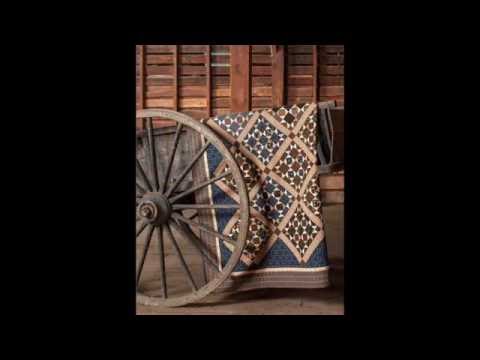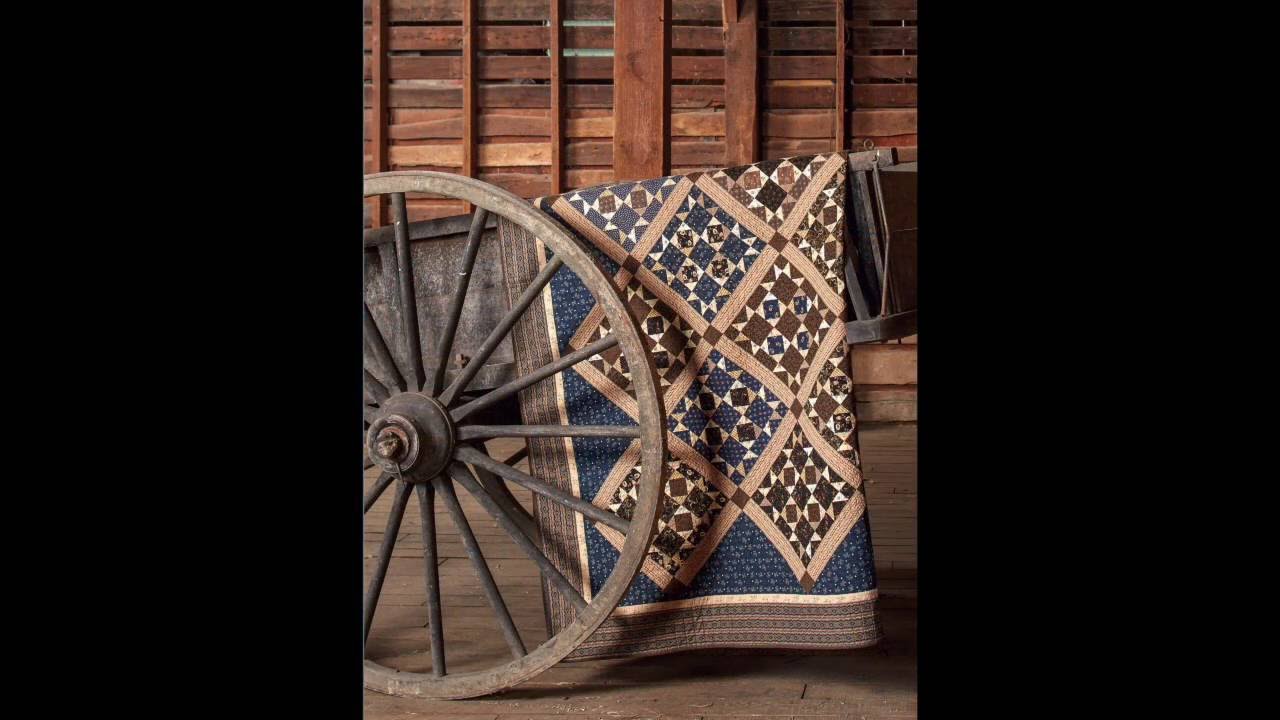Civil War reproduction fabrics are a captivating way to transport yourself back in time to one of the most pivotal periods in American history. These exquisite fabrics authentically reproduce the designs and patterns used during the Civil War era, allowing you to create stunning quilts, clothing, or home decor that reflects the spirit of this significant time. Each fabric is carefully crafted with attention to detail and historical accuracy, ensuring that every project you undertake will be a true homage to the past. With a wide range of intricate and beautiful patterns to choose from, you can bring the essence of the Civil War era into your modern life. Whether you are a history enthusiast, a passionate quilter, or simply appreciate the timeless elegance of these fabrics, the allure of Civil War reproduction fabrics is undeniable. Immerse yourself in the rich heritage and artistry of this era as you create something truly special with these remarkable fabrics. Explore the nostalgic and authentic world of Civil War reproduction fabrics today and let your creativity soar as you connect with the past.

Civil War Reproduction Fabrics: Preserving History in Textiles
The Civil War era is a significant chapter in American history, and its impact can still be felt today. One way to connect with this period is through Civil War reproduction fabrics. These fabrics, inspired by the textiles used during the 1860s, allow us to recreate the look and feel of that time period. In this article, we will explore the history of Civil War reproduction fabrics and their significance in preserving our past.
The Origins of Civil War Reproduction Fabrics
During the Civil War, textiles played a vital role in society. The fabrics used during this era reflected the fashions of the time and were often made from natural fibers such as cotton and wool. Over time, these fabrics became harder to find, making it difficult for historians and enthusiasts to accurately recreate the clothing and quilts of the period.
As interest in the Civil War grew in the 20th century, so did the demand for authentic reproduction fabrics. Textile manufacturers began researching and studying original fabrics from the time, aiming to recreate their colors, patterns, and textures to the highest degree of accuracy possible. This led to the birth of Civil War reproduction fabrics, allowing individuals to create historically accurate garments and quilts.
The Significance of Civil War Reproduction Fabrics
Civil War reproduction fabrics serve as a valuable resource for historians and reenactors alike. By using these fabrics in their projects, they can create historically accurate clothing, quilts, and other textile-based items. This attention to detail helps to bring the past to life and provides a tangible connection to history.
These fabrics also play a crucial role in the preservation of the past. By studying and replicating the original materials, we can gain a deeper understanding of the period’s fashion trends, social classes, and cultural influences. Additionally, these fabrics allow us to document and showcase the craftsmanship of the time, ensuring that future generations can appreciate and learn from the skills of the past.
The Characteristics of Civil War Reproduction Fabrics
Civil War reproduction fabrics are designed to closely resemble the textiles used during the 1860s. They often feature intricate patterns, muted colors, and a slightly rough texture, mimicking the look and feel of the originals. These fabrics are typically made from natural fibers, such as cotton, linen, and wool, to maintain historical accuracy.
One of the challenges of creating Civil War reproduction fabrics is the limited availability of surviving originals. Many fabrics from this era have deteriorated over time or are simply too fragile to handle. Manufacturers rely on historical documents, photographs, and artifacts to guide their reproduction process and ensure the highest level of accuracy possible.
Using Civil War Reproduction Fabrics
Whether you are a historian, a reenactor, or simply someone with an appreciation for history, there are countless ways to incorporate Civil War reproduction fabrics into your projects. These fabrics can be used to create period clothing, quilts, home decor items, and more. Many individuals enjoy using them in historical reenactments, allowing them to fully immerse themselves in the Civil War era.
When working with Civil War reproduction fabrics, it is essential to handle them with care and follow proper preservation techniques. These fabrics are valuable resources and should be treated as such. Additionally, it is crucial to research and educate yourself about the period’s fashion and textile trends to ensure the highest level of historical accuracy in your projects.
In conclusion, Civil War reproduction fabrics are a vital tool in preserving the history of the era. They allow us to recreate the look and feel of the 1860s and provide a tangible connection to the past. By using these fabrics in our projects, we can document and showcase the craftsmanship of the time, ensuring that the legacy of the Civil War lives on for future generations.
Reproducing History: Unleashing the Timeless Charm of Civil War Quilt Patterns
Civil War Reproduction Fabrics
Civil War Reproduction Fabrics
| Fabric Name | Design | Color Palette | Historical Significance |
|---|---|---|---|
| Chantilly | Floral and Vine | Soft pastels with hints of gold | Popular during the mid-19th century, Chantilly fabric was often used in delicate dresses and home linens. |
| Victorian Paisley | Paisley pattern | Rich jewel tones | This intricate pattern was favored by the upper class during the Civil War era, adding a touch of elegance to garments and accessories. |
| Confederate Rose | Large rose blossoms | Deep reds and greens | Symbolizing the resilience of the Confederacy, this fabric was often used in quilts and clothing to display Southern pride. |
| Antebellum Stripes | Vertical stripes | Earth tones with muted blues | These stripes were commonly seen in attire worn by Southern aristocrats, reflecting their plantation lifestyle and social status. |
| Union Blue | Small geometric patterns | Various shades of blue | Representing the Union Army, this fabric was predominantly used in military uniforms and patriotic-themed garments. |
In the realm of Civil War reproduction fabrics, there exists a fascinating array of designs and colors that transport us back to a pivotal era in American history. Each fabric holds its own historical significance, capturing the essence of the time and showcasing the creativity and craftsmanship of the period.
One such fabric, Chantilly, embodies the delicate beauty of the mid-19th century. Adorned with floral and vine motifs, this fabric boasts a soft pastel color palette with hints of gold, recalling the elegance of the era and its prevalence in dresses and home linens.
Another notable design, Victorian Paisley, takes us to the upper echelons of society during the Civil War era. With its intricate paisley pattern and rich jewel tones, this fabric epitomizes luxury and refinement, gracing garments and accessories of the elite.
For those seeking fabrics that embody Southern pride, Confederate Rose stands as a symbol of resilience. Featuring large rose blossoms in deep reds and greens, this fabric found its way into quilts and clothing, proudly displaying allegiance to the Confederacy.
Antebellum Stripes, with its vertical stripes in earth tones and muted blues, harkens back to the attire of Southern aristocrats. This design reflects the plantation lifestyle and social status of the time, making it a cherished fabric among enthusiasts of Civil War reproduction.
Representing the Union Army, Union Blue fabric takes on a patriotic role. Adorned with small geometric patterns in various shades of blue, this fabric found its place predominantly in military uniforms and garments designed to evoke a sense of national unity.
Exploring the world of Civil War reproduction fabrics allows us to connect with the past and appreciate the artistry and history that went into their creation. From the delicate Chantilly to the proud Confederate Rose, each fabric tells a unique story, reminding us of the rich tapestry of our nation’s past.

